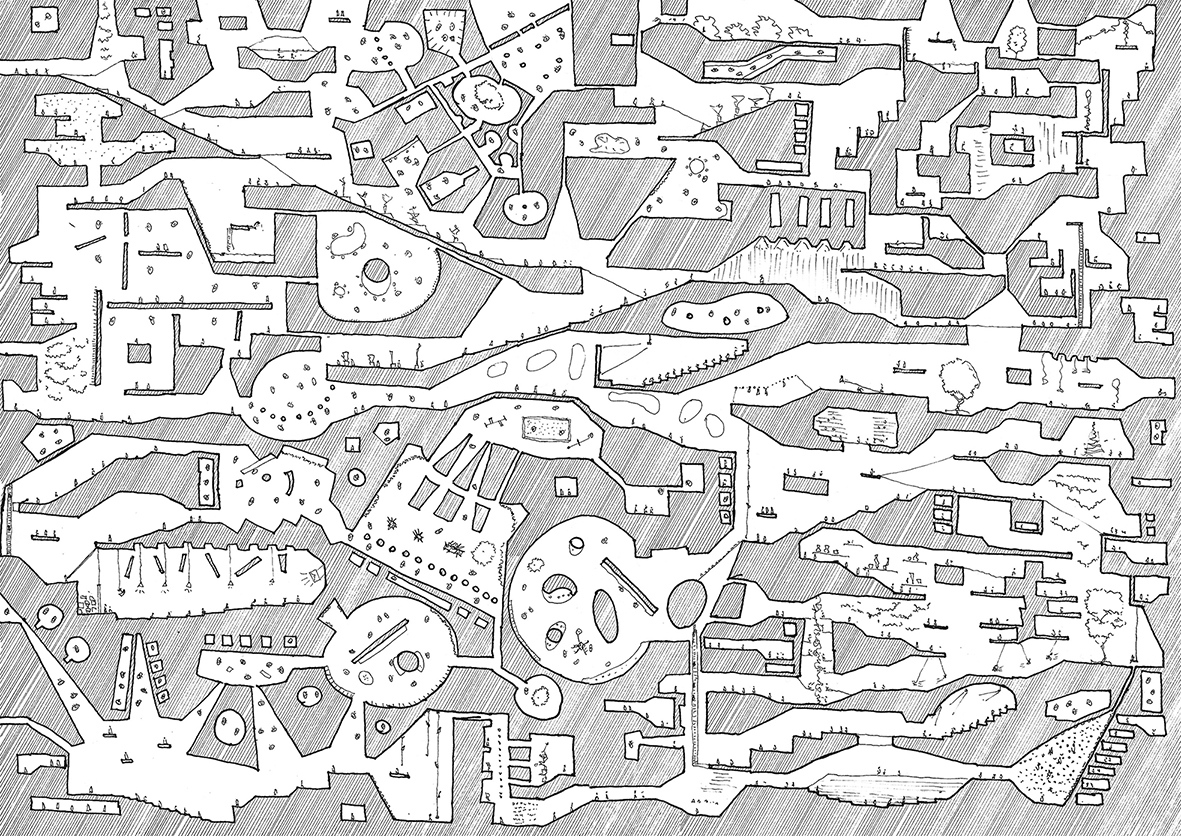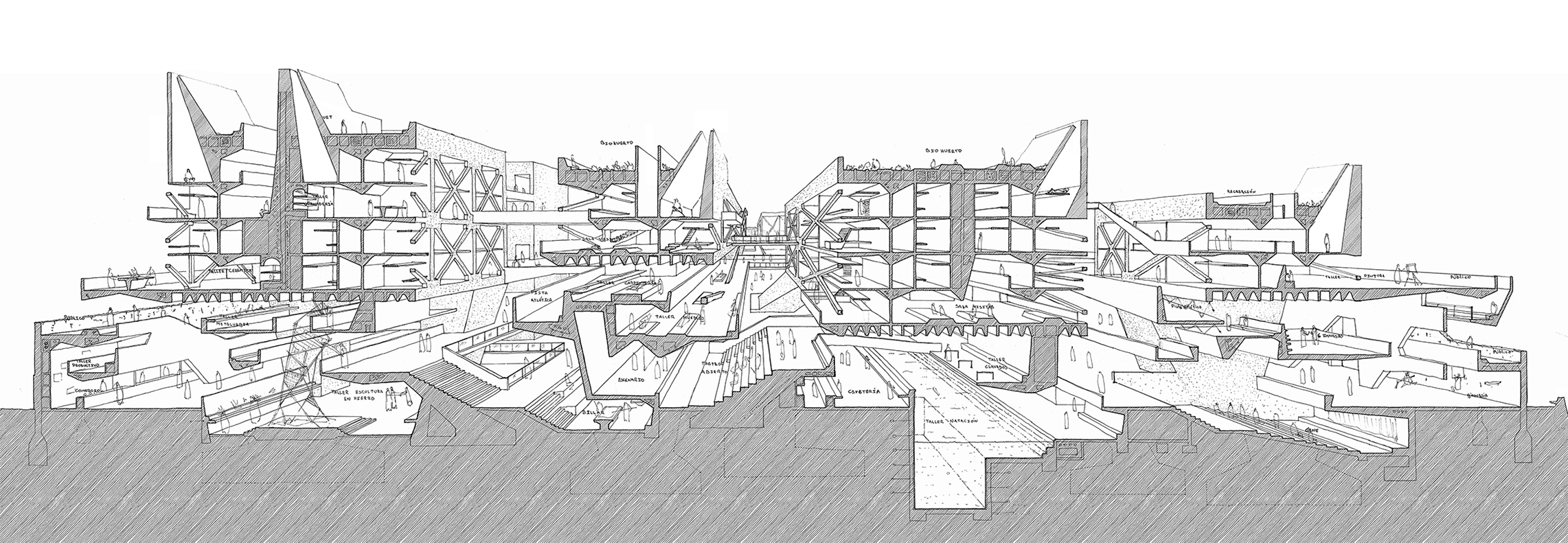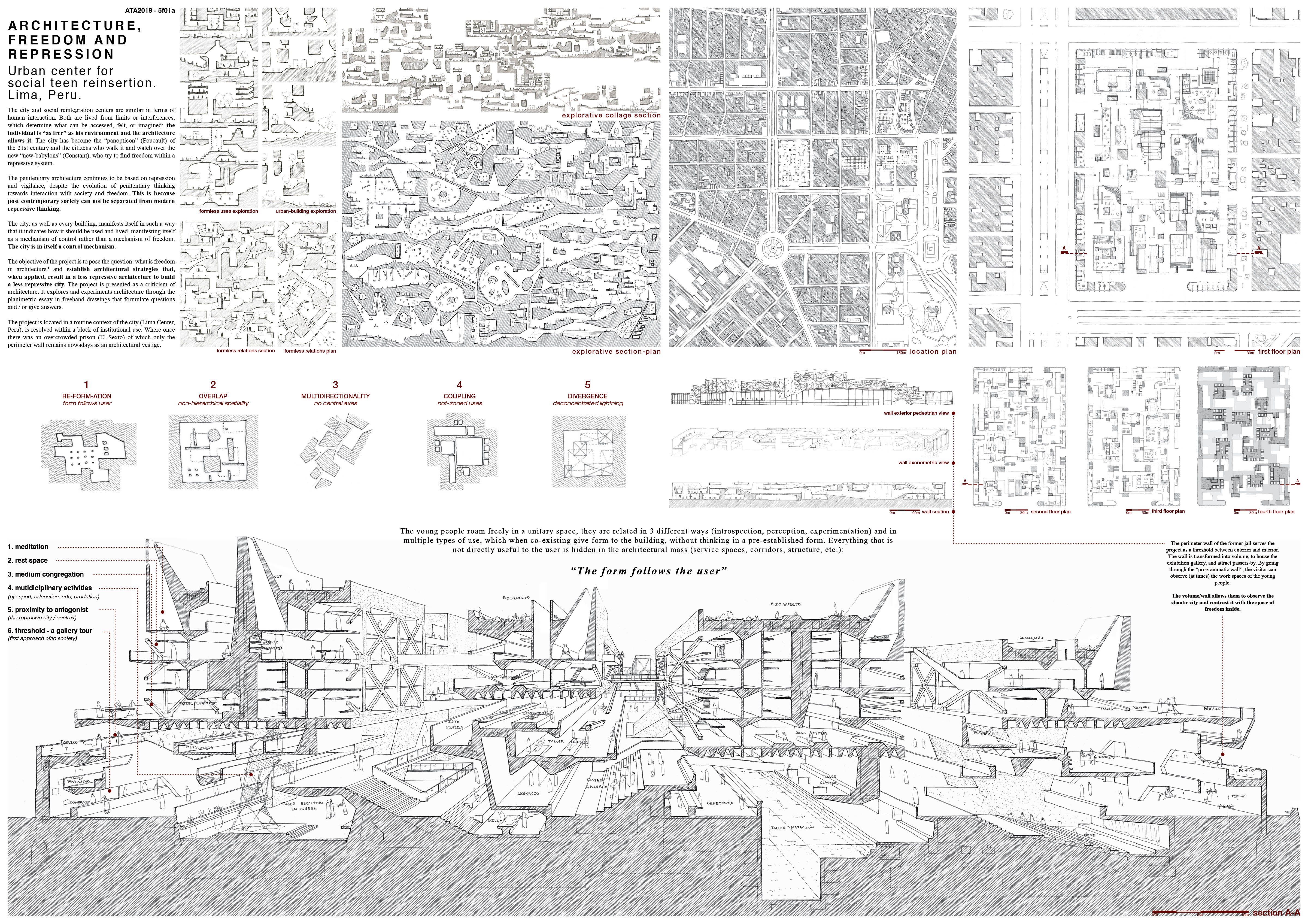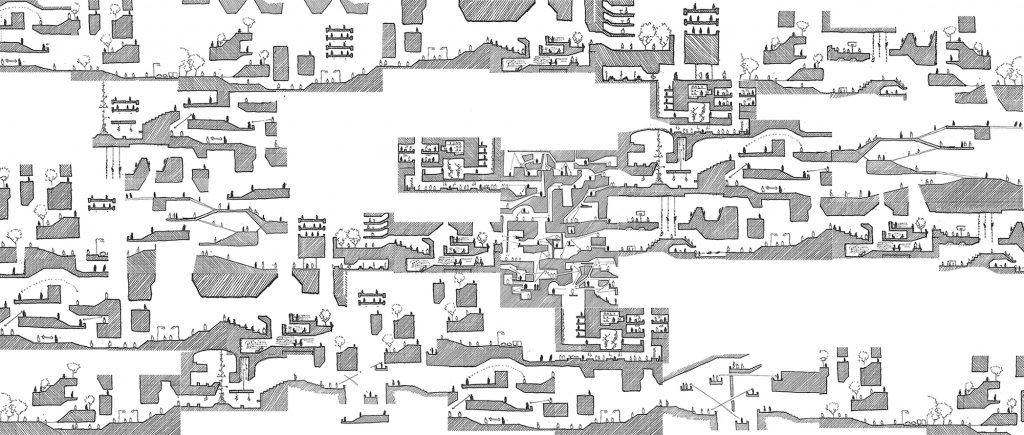The city and social reintegration centers are similar in terms of human interaction. Both are lived from limits or interferences, which determine what can be accessed, felt, or imagined: the individual is “as free” as his environment and the architecture allows it. The city has become the “panopticon” (Foucault) of the 21st century and the citizens who walk it and watch over the new “new-babylons” (Constant), who try to find freedom within a repressive system.
The project is presented as a criticism of architecture. It explores and experiments architecture through the planimetric essay in freehand drawings that formulate questions and / or give answers.

The penitentiary architecture continues to be based on repression and vigilance, despite the evolution of penitentiary thinking towards interaction with society and freedom. This is because post-contemporary society can not be separated from modern repressive thinking. The city, as well as every building, manifests itself in such a way that it indicates how it should be used and lived, manifesting itself as a mechanism of control rather than a mechanism of freedom. The city is in itself a control mechanism. The objective of the project is to pose the question: what is freedom in architecture? and establish architectural strategies that, when applied, result in a less repressive architecture to build a less repressive city. The project is located in a routine context of the city (Lima Center, Peru), is resolved within a block of institutional use. Where once there was an overcrowded prison (El Sexto) of which only the perimeter wall remains nowadays as an architectural vestige. The young people roam freely in a unitary space, they are related in 3 different ways (introspection, perception, experimentation) and in multiple types of use, which when co-existing give form to the building, without thinking in a pre-established form. Everything that is not directly useful to the user is hidden in the architectural mass (service spaces, corridors, structure, etc.): “The form follows the user”

The Board:






